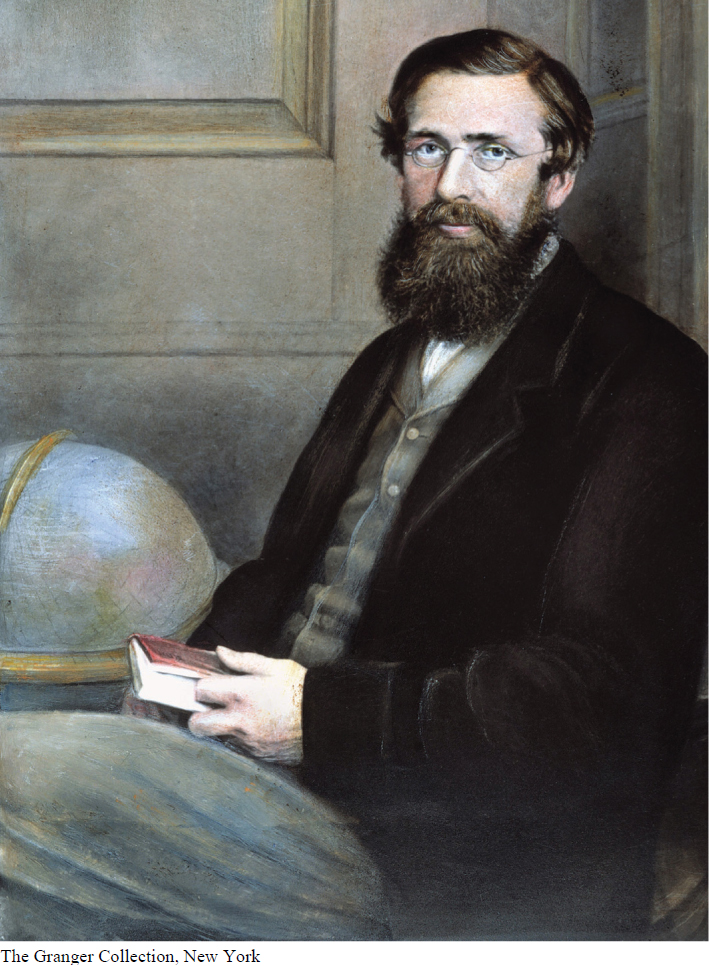8.4: Observing geographic similarities and differences among fossils and living plants and animals, Darwin developed a theory of evolution.
Darwin didn’t have a great “Eureka!” moment about evolution while on the Beagle. The wheels were turning in his head after his voyage, however, and inspiration struck when he was reading “for amusement” Essay on the Principle of Population, by the economist Thomas Malthus. Malthus prophesied doom and gloom for populations, including humans, based on his calculations that populations had the potential to grow much faster than food supplies could. Darwin speculated that, rather than the future holding certain catastrophe for all, maybe the best individuals would “win” in the ensuing struggle for existence, and the worst would “lose.” If so, he suddenly saw that “favourable variations would tend to be preserved, and unfavourable ones to be destroyed.”
In 1842, Darwin prepared a draft of his ideas in a 35-
He also had an inkling that his ideas would rock the world. In a letter to a close friend, he wrote: “At last gleams of light have come, and I am almost convinced (quite contrary to the opinion I started with) that species are not (it is like confessing to murder) immutable.” But “confessing to murder” was apparently more than Darwin was ready for. Inexplicably, he put his sketch into a drawer, where it remained for 14 years—
In a letter to Darwin, Alfred Russel Wallace (FIGURE 8-7), a young British biologist in the throes of malaria-

Darwin then sprang into action, rapidly putting together his thoughts and observations and completing, 16 months later, a full book. In 1859, he published The Origin of Species (its full title is On the Origin of Species by Means of Natural Selection, or the Preservation of Favoured Races in the Struggle for Life).
324
The book was an instant hit, selling out on its first day, provoking public discussion and debate and ultimately causing a wholesale change in the scientific understanding of natural selection and many other important evolutionary ideas. Where once the worldview was of a young earth, populated by unchanging species all created at one time, with no additions or extinctions, now there was a new dynamic view of life on earth: descent with modification—

Darwin’s theory has proved to be among the most important and enduring contributions in all of science. It has stimulated an unprecedented diversity of theoretical and applied research, and it has withstood repeated experimental and observational testing. With the background of Darwin’s elegant idea in hand, we can now examine its details.
TAKE-HOME MESSAGE 8.4
After putting off publishing his thoughts on natural selection for more than 15 years, Darwin did so only after Alfred Russel Wallace independently came up with the same idea. The two men published a joint presentation on their ideas in 1858, and Darwin published a much more detailed treatment in The Origin of Species in 1859, sparking wide debate and discussion about the processes and patterns of evolution.
What finally prompted Darwin to publish his theory of natural selection as the means of evolution after it sat idle for over 15 years?
325